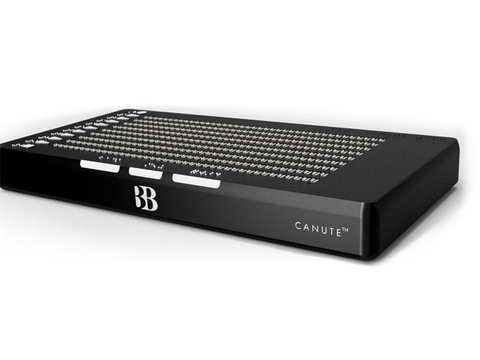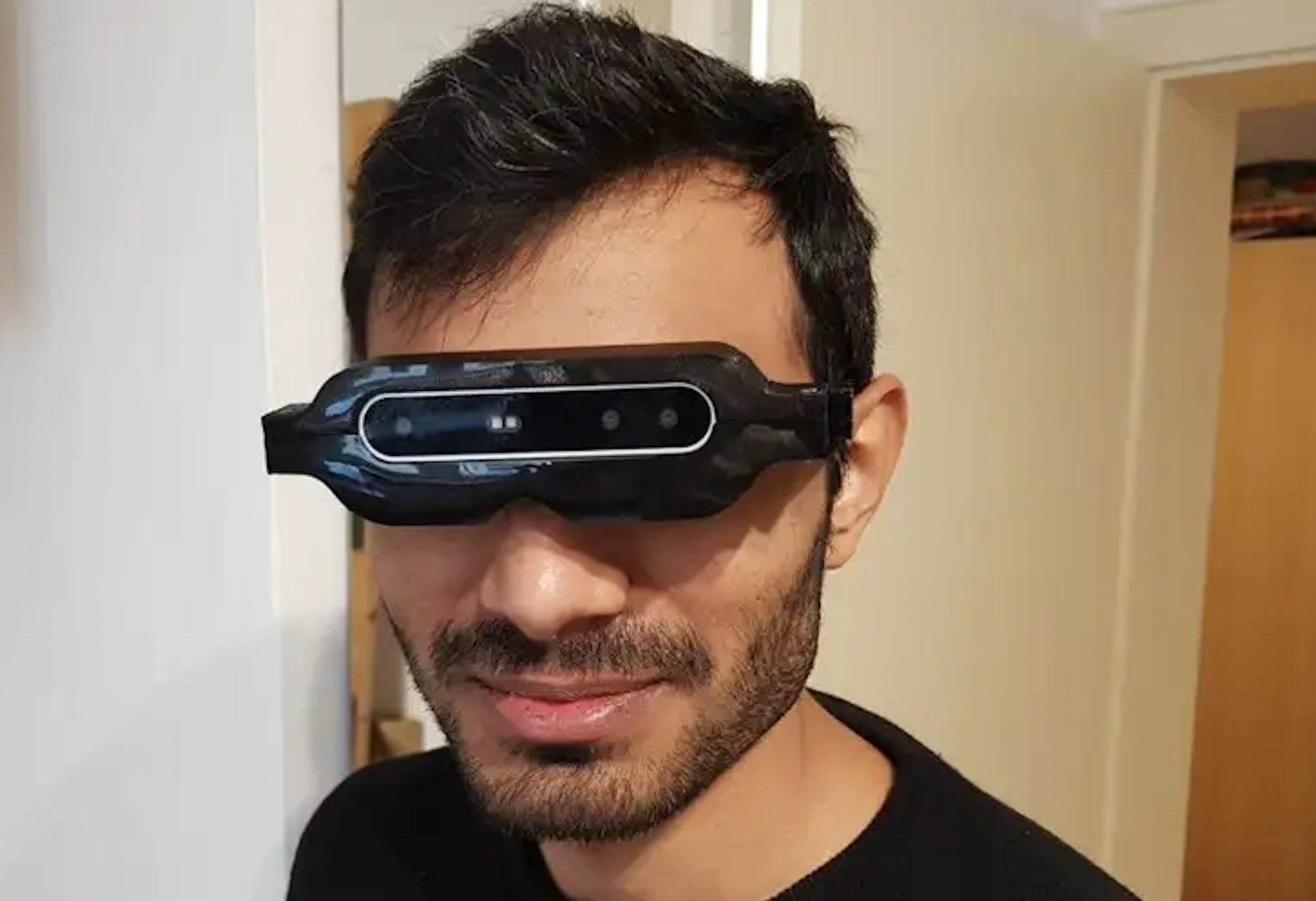OCR Devices for the Blind: Converting Text into Speech with Ease
Wiki Article
Discover Cutting-edge Tools Created for the Aesthetically Impaired
The advancement of innovative devices for the visually damaged represents a substantial development in access and freedom. Technologies such as wise glasses with AI capabilities and mobile applications created to supply auditory descriptions are improving daily experiences for users.Smart Glasses for Navigating

Smart glasses made for navigation are transforming the way visually damaged people connect with their setting. These sophisticated gadgets use a combination of video camera innovation, fabricated intelligence, and acoustic feedback to supply real-time details concerning surroundings. By using challenge discovery systems, wise glasses can alert customers to potential threats, making it possible for safer movement in both acquainted and strange setups.
The integration of GPS modern technology further boosts navigating abilities, enabling users to get auditory instructions as they relocate. This hands-free technique not just promotes freedom but likewise encourages visually impaired people to navigate city landscapes with enhanced confidence. In addition, lots of wise glasses are outfitted with attributes that recognize spots and street signs, supplying contextual info that improves the customer experience.
Moreover, the advancement of these gadgets is continuously advancing, with business functioning to improve the precision of item recognition and increase the variety of navigational functions. As clever glasses come to be a lot more available and inexpensive, they hold the prospective to dramatically change day-to-day live for visually impaired users. Eventually, these innovative devices stand for an important action towards inclusivity, offering improved movement and a better feeling of freedom for people browsing the world around them.

Mobile Apps for Daily Living
Exactly how can mobile applications improve the every day lives of aesthetically damaged people? Mobile applications are reinventing the means visually damaged customers browse their atmospheres, manage everyday jobs, and accessibility details. These applications provide important support through various functionalities, cultivating independence and boosting top quality of life.Several cutting-edge mobile applications are designed specifically for day-to-day living. Applications like Be My Eyes attach visually damaged individuals with sighted volunteers through video clip phone calls, enabling them to get real-time aid with jobs such as checking out tags or browsing strange spaces. Seeing AI, established by Microsoft, utilizes artificial knowledge to describe surroundings, reviewed text, and recognize items, successfully changing a smart device right into a powerful tool for day-to-day assistance.
In addition, navigation apps customized for the aesthetically damaged, such as Aira and BlindSquare, provide audio-based directions and ecological details, enabling users to traverse their surroundings safely and confidently. Past navigating and instant aid, mobile applications additionally sustain company and task monitoring, with attributes that help individuals establish pointers, produce to-do checklists, and track consultations. In summary, mobile applications work as vital sources, empowering aesthetically damaged people to lead even more independent and fulfilling lives.
Wearable Technologies for Assistance
Empowerment with modern technology is progressively apparent in the world of wearable gadgets developed to assist visually damaged individuals. These cutting-edge tools integrate effortlessly right into life, boosting navigating and providing vital feedback to users. For example, smart glasses outfitted with cameras can read and acknowledge faces text out loud, enabling customers to engage even more confidently in professional and social settings.One more notable development is using haptic comments systems in wearable tools. These systems use vibrations or other tactile signals to convey information about the customer's setting, such as barriers or modifications in surface, improving wheelchair and security. Wearable innovations also include wristbands that connect to smartphones, signaling individuals to alerts with refined vibrations, thus my review here boosting connection without reliance on visual hints.
As these modern technologies proceed to develop, they are not just improving freedom for aesthetically damaged individuals yet likewise fostering a better sense of incorporation in society. By connecting the void in between difficulties encountered in everyday living and the potential for autonomy, wearable technologies work as essential tools in the mission for equality and empowerment for those with visual problems.
Audio Summary Devices
Sound summary devices play an important role in improving ease of access for aesthetically damaged people, providing them with the ability to engage with aesthetic media. Screen readers for the blind. These devices offer narrated descriptions of crucial visual components in films, television shows, and live performances, making certain that customers can totally comprehend the context and feelings communicated with visualsAudio summary can be integrated into various platforms, including streaming services, cinema testings, and live cinema. Several popular streaming services now consist of audio summary as an ease of access function, permitting customers to pick it conveniently. Along with mainstream media, specialized applications also exist, offering audio descriptions for art events, museums, and various other cultural events.
The performance of audio description rests on the ability of the storytellers, that have to share visual information succinctly without taking away from the original audio. Developments in this field are additionally leading the method for even more customized experiences, where users can change the degree of detail and pacing according to their preferences.
Braille Innovations and Devices
Braille advancements and tools have considerably changed the method visually damaged people communicate with message and info. Modern innovations have brought about the development of flexible devices that enhance proficiency and independence among users. Especially, Braille display modern technologies have actually progressed, enabling vibrant analysis experiences. These devices convert electronic message into Braille, allowing customers to access a substantial variety of details on smartphones, tablets, and computer systems.
Furthermore, mobile Braille notetakers combine typical Braille input with contemporary capabilities, assisting in note-taking, scheduling, and document editing and enhancing on the move. Wearable technology for low vision. These compact gadgets commonly include text-to-speech capabilities, linking the space between Braille and auditory info
Furthermore, ingenious Braille printers have actually emerged, enabling customers to generate Braille labels, records, and academic materials efficiently. This availability promotes higher engagement in specialist and instructional environments, inevitably advertising inclusivity.
Furthermore, study into smart Braille innovations remains to broaden. Gadgets that integrate expert system are being discovered to offer real-time navigation assistance and contextual info, improving the user experience in varied setups. Generally, these innovations show a commitment to encouraging visually damaged individuals with technology, ensuring they can conveniently gain access to and involve have a peek at these guys with the world around them.

Verdict
The development of innovative tools for the visually impaired substantially ortho k near me boosts independence and top quality of life. These technologies not only foster greater incorporation yet also advertise freedom in day-to-day tasks, eventually adding to a much more obtainable and equitable culture for visually damaged individuals.As wise glasses become extra accessible and economical, they hold the prospective to significantly change everyday life for aesthetically damaged customers. Mobile applications are revolutionizing the method aesthetically damaged customers browse their environments, handle day-to-day tasks, and gain access to information. Apps like Be My Eyes connect visually impaired individuals with sighted volunteers by means of video clip calls, enabling them to receive real-time help with jobs such as reading tags or navigating unfamiliar areas.Furthermore, navigation applications customized for the visually impaired, such as Aira and BlindSquare, use audio-based instructions and environmental information, allowing customers to traverse their environments safely and confidently.The improvement of ingenious tools for the visually damaged significantly enhances self-reliance and high quality of life.
Report this wiki page